1) What Anxiety Feels Like
Anxiety can show up as racing thoughts, tight chest, stomach upset, sweating, shakiness, or feeling detached. It often arrives in ordinary places: mornings, emails, queues, bedtime.
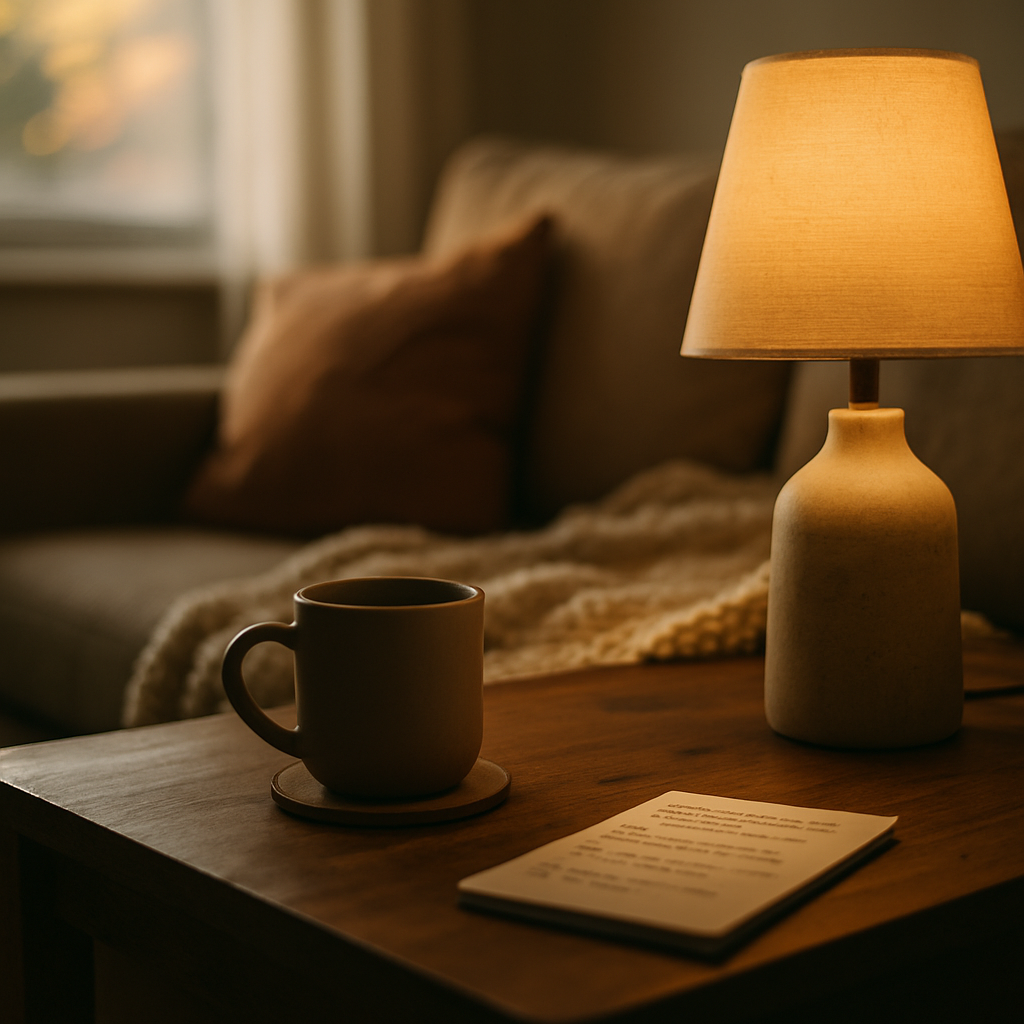
An alarm system trying to protect you. We can train it to ring less — and ring wiser. This page explains what anxiety is, how it works, and practical tools to steady the system.
Anxiety can show up as racing thoughts, tight chest, stomach upset, sweating, shakiness, or feeling detached. It often arrives in ordinary places: mornings, emails, queues, bedtime.
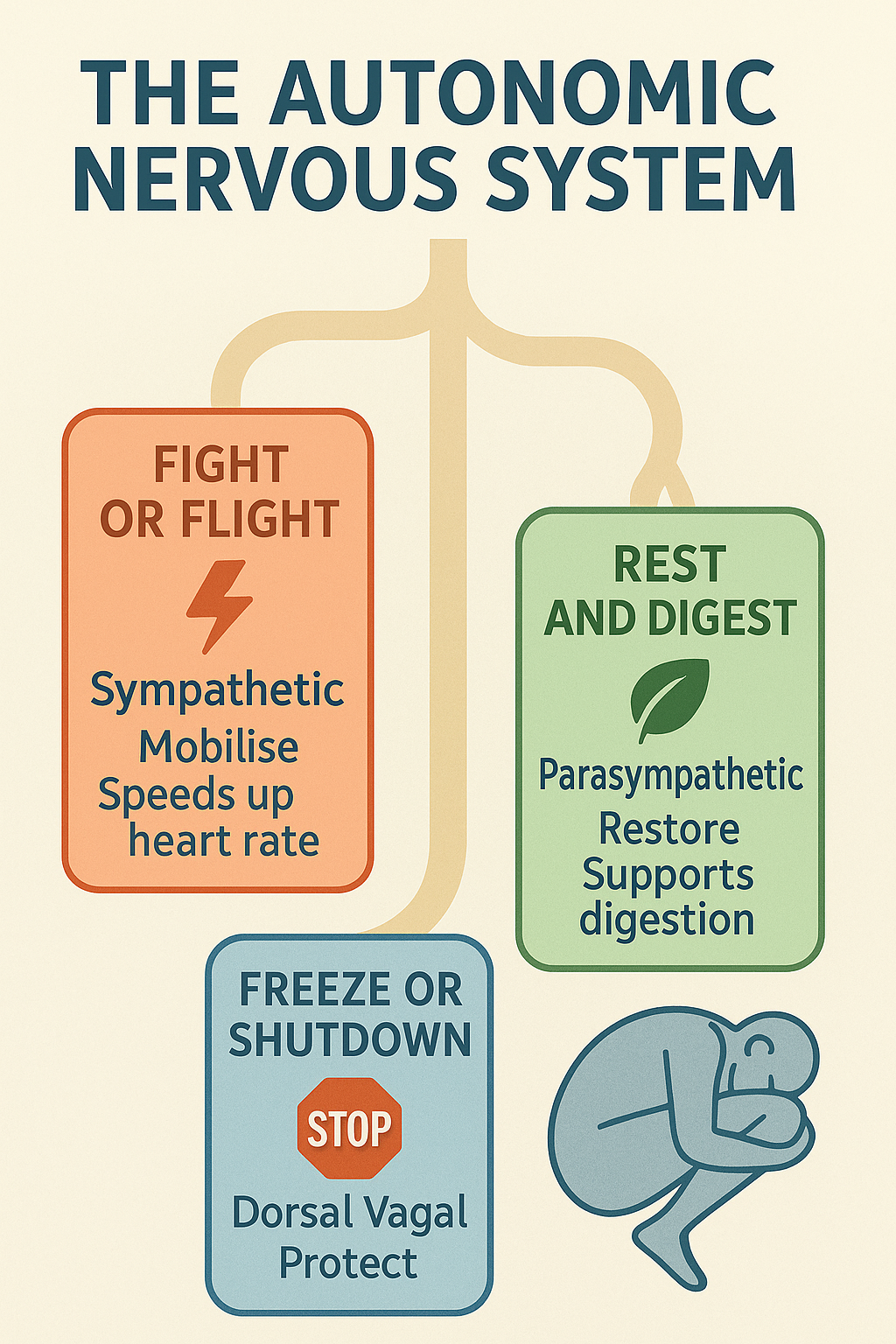
The autonomic system flips between alert, calm, and shutdown states.
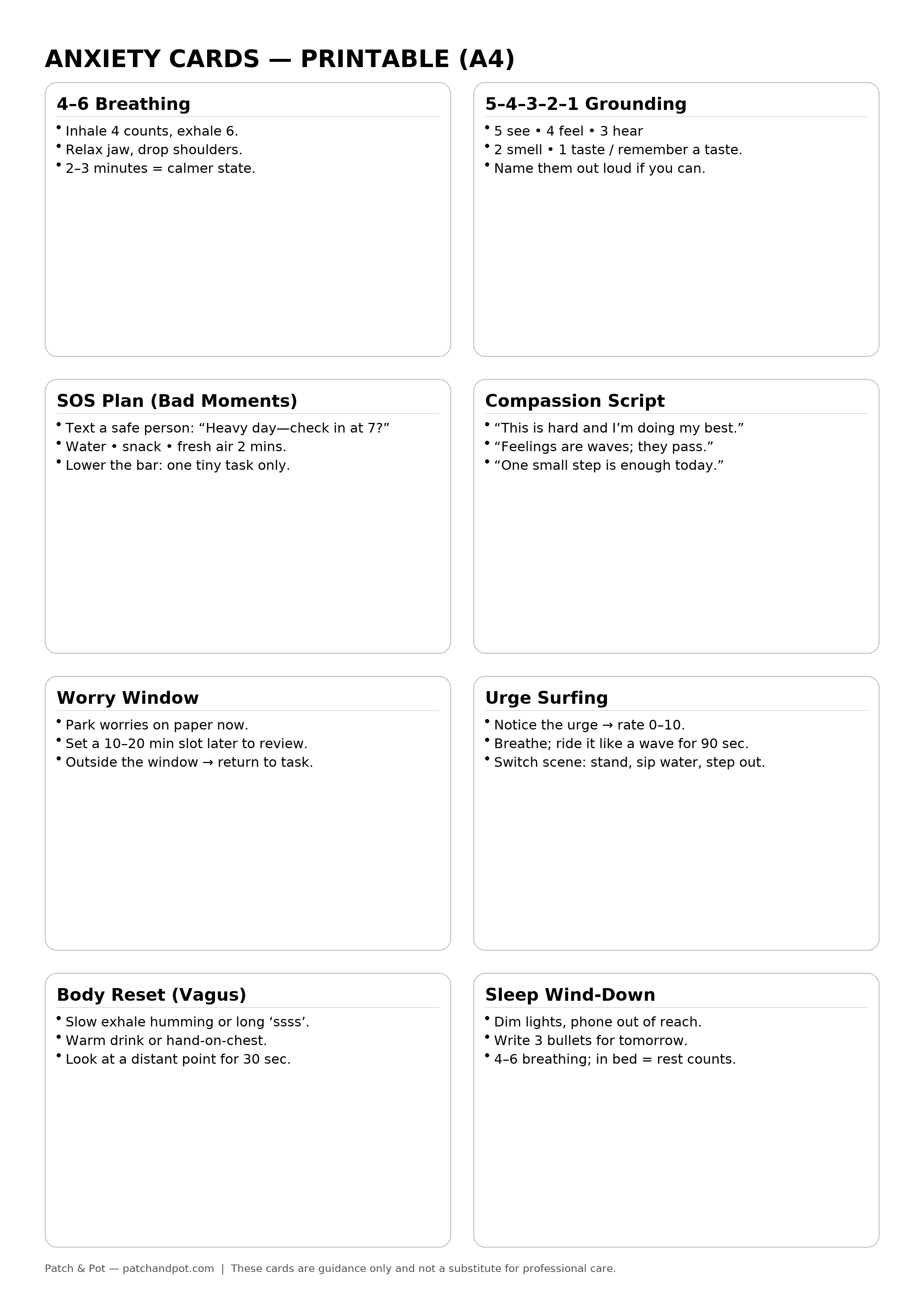
Tiny, repeatable rituals teach the alarm that you’re safe.
Avoidance strengthens fear. Ladders mean facing the fear gradually.
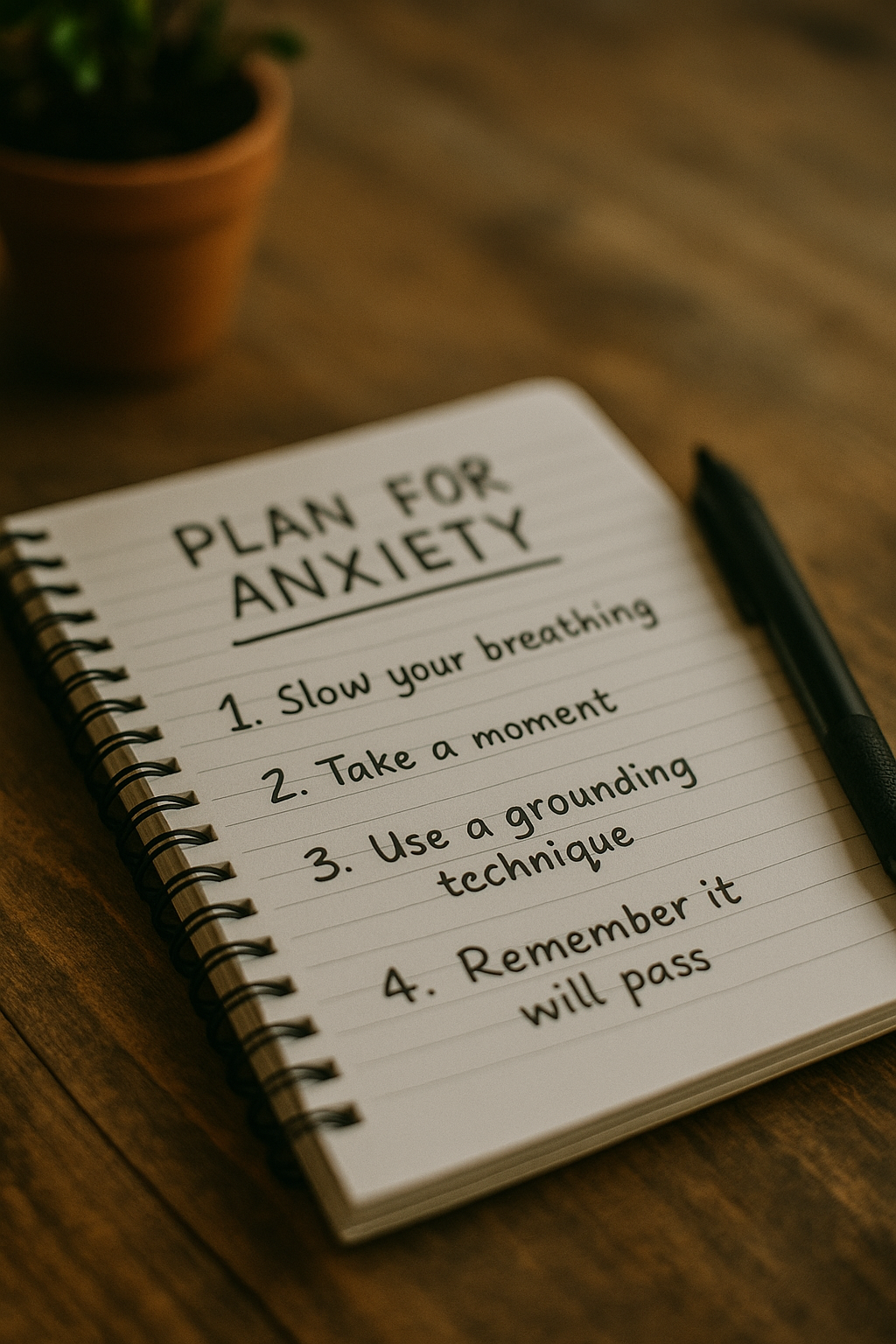
Retrain the alarm, one gentle rung at a time.
Swap harsh inner lines for kinder, believable ones.
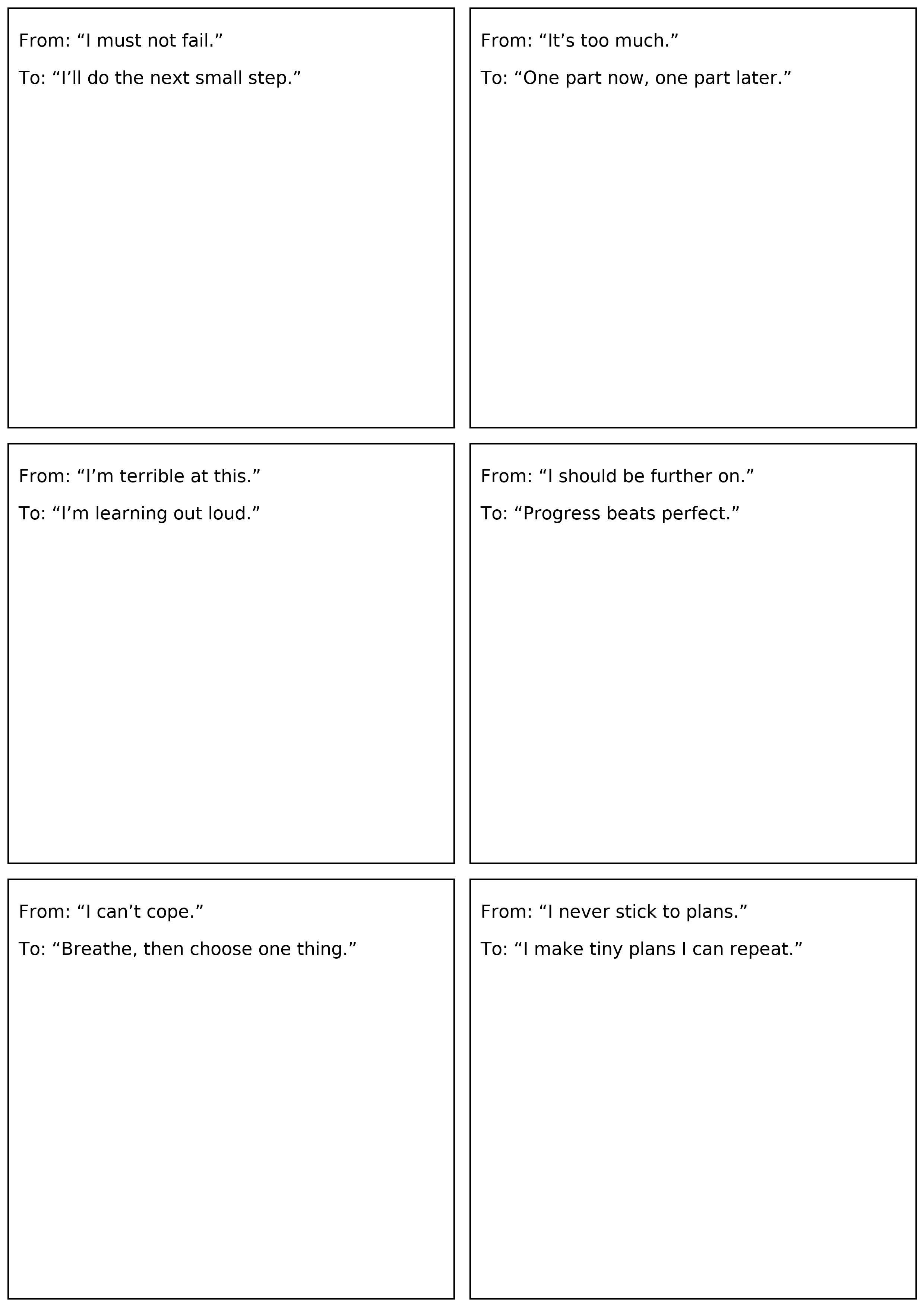
Kind, specific language supports calming circuits.
Keep the facts, add choice and agency.
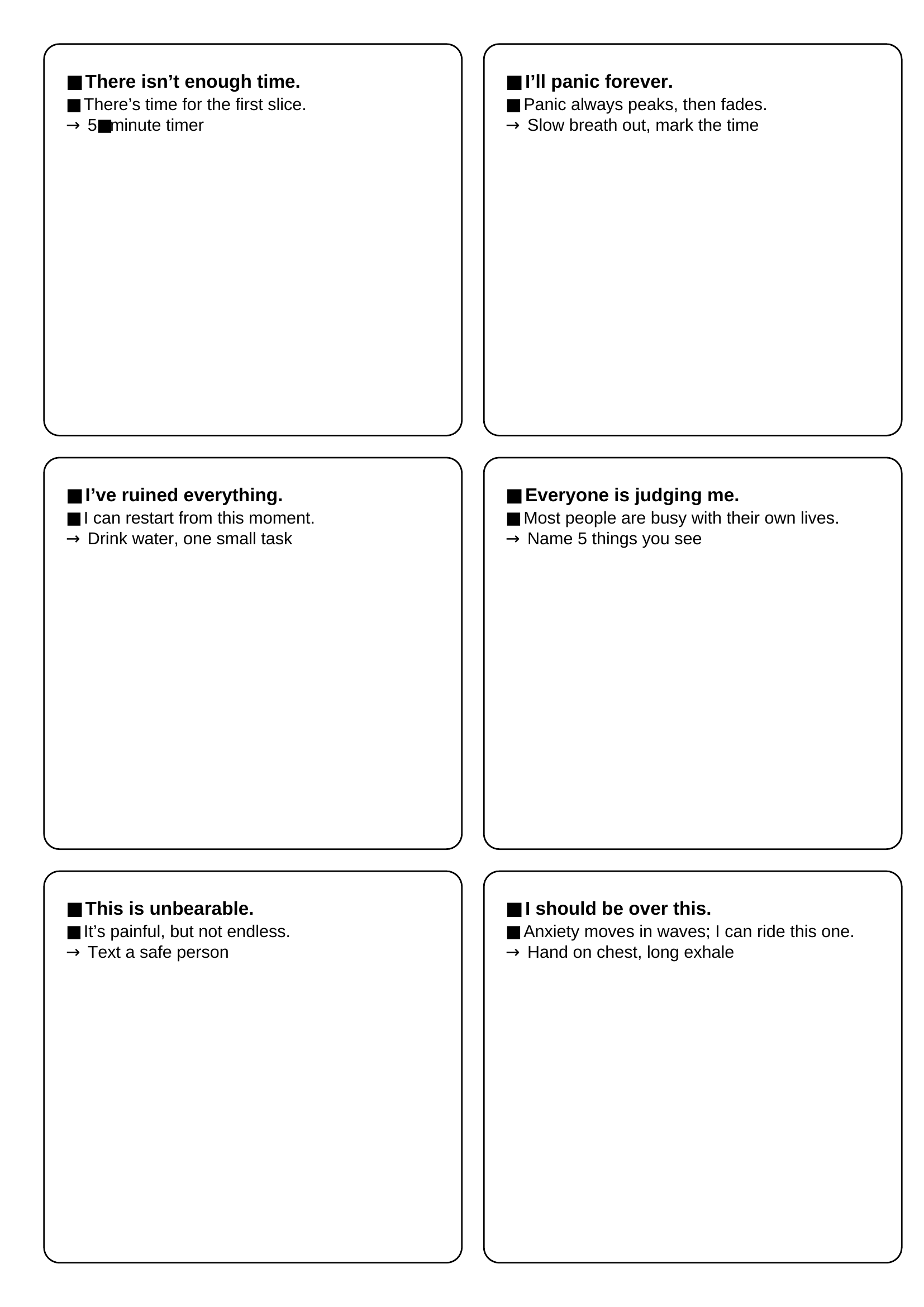
Accurate, balanced reframes stop the spiral without false positivity.
The information here is for general understanding and support and is not a substitute for professional care. If you feel unable to keep yourself safe or someone else is at risk, call 999 (UK) immediately.